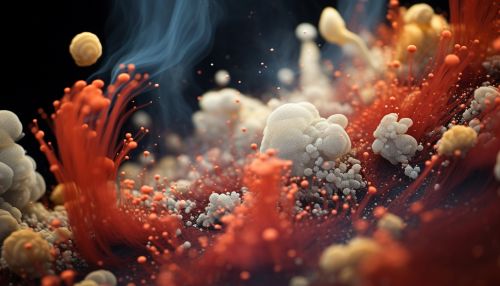The Chemistry of Particulate Matter and Respiratory Health
Introduction
Particulate matter (PM) is a complex mixture of extremely small particles and liquid droplets that get suspended in the air. The chemical and physical composition of PM can vary greatly depending on the source and atmospheric conditions. This article will delve into the chemistry of particulate matter and its impact on respiratory health.


Chemistry of Particulate Matter
Particulate matter is composed of a variety of components, including acids (such as nitrates and sulfates), organic chemicals, metals, soil or dust particles, and allergens (such as fragments of pollen or mold spores). The size of the particles is a key determinant of their potential to cause health problems. The U.S. Environmental Protection Agency (EPA) groups particulate matter into two categories: PM10 and PM2.5. PM10 refers to particles with diameters that are 10 micrometers and smaller, and PM2.5 includes particles with diameters that are 2.5 micrometers and smaller.
Primary and Secondary Particles
Particulate matter can be categorized into primary and secondary particles. Primary particles are emitted directly from a source, such as construction sites, unpaved roads, fields, smokestacks, or fires. Examples of primary particles include dust, smoke, or soot. Secondary particles, on the other hand, are formed in complicated atmospheric reactions involving chemicals such as sulfur dioxides and nitrogen oxides that are emitted from power plants, industries, and automobiles. In the atmosphere, these gases can form fine particles through chemical reactions with oxygen, water, and other compounds.
Chemical Composition
The chemical composition of particulate matter can vary greatly depending on the location and time of year. In general, PM2.5 is composed of sulfate, nitrate, ammonia, sodium chloride, black carbon, mineral dust, and water. It also contains a large number of organic compounds, collectively referred to as organic matter. The composition of PM10 is similar to that of PM2.5, but with a higher proportion of mineral dust and sea salt.
Impact on Respiratory Health
The health effects of particulate matter have been widely studied in humans and animals, and include asthma, lung cancer, cardiovascular issues, and premature death. The size of particles is directly linked to their potential for causing health problems. Small particles less than 10 micrometers in diameter pose the greatest problems because they can get deep into your lungs, and some may even get into your bloodstream.
Respiratory Diseases
Exposure to particulate matter can lead to a variety of respiratory diseases. For example, PM2.5 has been associated with increased hospital admissions for respiratory issues, including asthma and chronic obstructive pulmonary disease (COPD). Long-term exposure to fine particulate matter can also lead to the development of lung cancer.
Mechanism of Action
When inhaled, particulate matter can penetrate the respiratory system, reaching the lungs. The smallest particles, those less than 2.5 micrometers in diameter, can penetrate the deepest part of the lungs, causing inflammation and worsening pre-existing respiratory conditions. The chemical composition of the particles can also play a role in their toxicity. For example, particles containing heavy metals or polycyclic aromatic hydrocarbons (PAHs) can cause oxidative stress, leading to cell damage and inflammation.
Prevention and Control
Preventing and controlling exposure to particulate matter is crucial for protecting respiratory health. This can be achieved through a variety of measures, including improving air quality, reducing emissions from vehicles and power plants, and promoting the use of cleaner fuels and energy-efficient technologies.
